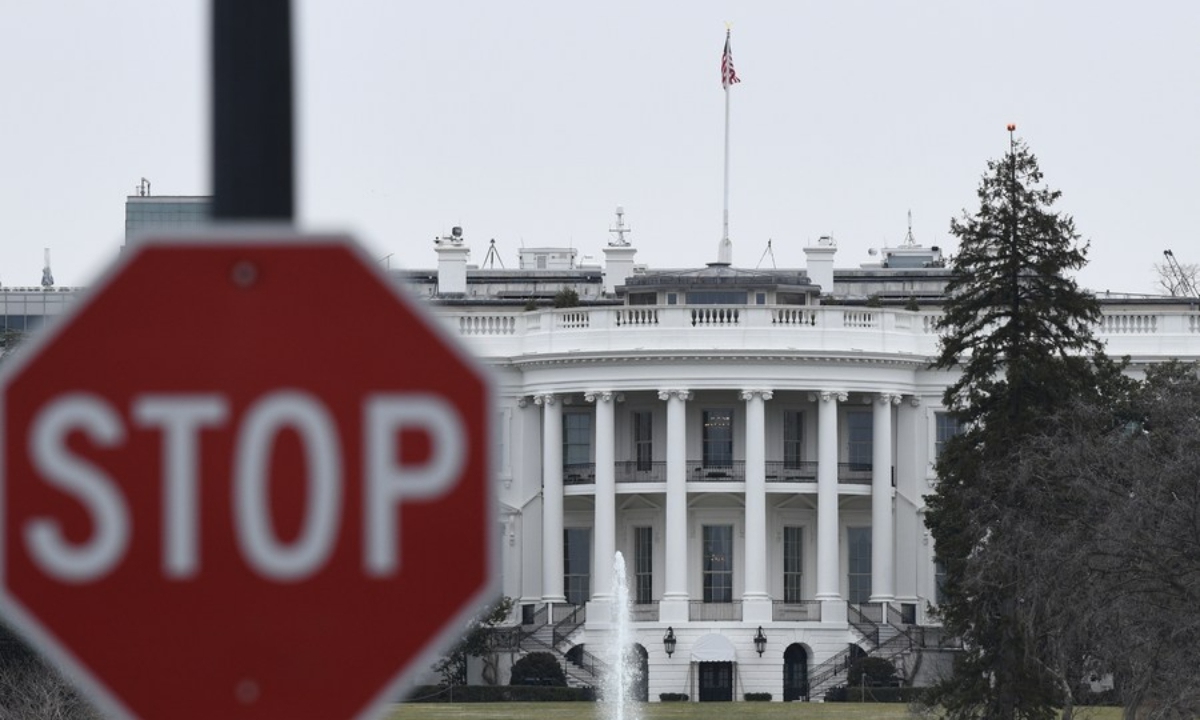
Photo: Xinhua
Earlier this year, US Congress managed to raise the federal debt limit that avoided a federal government default. Now, US lawmakers are working to reach agreement on the fiscal-year 2024 budget by September 30 to prevent a US federal government shutdown.The possible shutdown on October, after a debt ceiling crisis that rattled markets in the first half of 2023, has again illustrated the increasingly hostile political environment in Washington, despite the fact that growing partisan rivalry and confrontation will have serious consequences for the US and world economies.
A US government shutdown in October will not be as disastrous as breaching the debt ceiling, but it would affect hundreds of thousands of US federal workers and, depending on how long it lasts, potentially impact the broader US economy. The debt ceiling deal reached in May, between President Joe Biden and House Speaker Kevin McCarthy, specified that most of the federal government should be funded at essentially flat levels for the coming two years.
However, House Republicans say that the agreement only means the government won't spend more than the caps, and that spending less is fine. Many Republican leaders are pushing to limit funding for the 2024 fiscal year, beginning October 1, to what the budget was in 2022, which would mean a $115 billion reduction that Democrat opponents reject.
US' deepening federal debt woes reflect its hostile domestic political environment in Washington. The bitter bickering and partisan fight between Republicans and Democrats will most likely lead to a government shutdown, which, together with its debt crisis, will have serious consequences for the US economy and the global economy as a whole.
For instance, Goldman Sachs has issued a warning that the lack of consensus in Congress over the annual budget could bring the US political system to a standstill, causing its economy to take a 0.2 percentage points hit each passing week. While a government shutdown is described as more likely than not, according to Goldman Sachs, the deteriorating American debt woes will continue to cause uncertainty and volatility in global financial markets.
To make things worse, the US government structure and the political landscape are now largely confrontational and deeply polarized, with the two political parties, Republicans and Democrats, locking their heads fighting for the next presidential election in 2024.
Although the US has successfully passed 69 debt ceiling crises since the 1960s, since the beginning of this year, the systemic risk of the US financial system has worsened, and the prospect of an economic hard-landing in the US hasn't been ruled out. On August 1, rating agency Fitch Ratings downgraded the US long-term bonds rating to "AA+" from "AAA."
The downgrade is based on forecasted fiscal situation deterioration in the US over the next three years, which is troubled with a growing government debt burden, and the erosion of governance in Washington that has manifested in repeated debt limit standoffs and last-minute resolutions.
In Fitch's view, there has been a steady deterioration in "standards of governance" in the US over the past 20 years, including on fiscal revenues and debts settlement. The repeated debt-limit political standoffs and last-minute resolutions have eroded public confidence in fiscal management.
US Treasury bonds have long been deemed "the safest of safe havens," but Fitch's rating downgrading last week suggests it has lost some of its luster, which will cause a cascade of US debt sell-offs.
The last time that the US federal debt was downgraded by a major credit rating agency was in 2011 by S&P, which produced tremendous market impacts causing steep stock market declines and rising bond yields. If the 2011 rating reduction acts as a mirror, the US and global markets could face an unknown era of rising volatility.
The US is currently facing its highest borrowing costs since the 2008 financial crisis, amid fears that the Federal Reserve will keep interest rates higher for a possibly longer time in 2024. The yield on the 10-year US Treasury bonds rose to a 16-year high of 4.342 percent recently, which indicates the declining allure of the government debt.
The US economy now seems booming, but it is actually a dubious monetary bubble. Once the bubble bursts, another financial crisis may ensue, causing a severe slowdown in the economy.
In the past five years, the US has done considerable damage to the global economy by adopting unlimited "quantitative easing" first, and raising interest rates too drastically, which has severely rattled financial markets. In 2022, the Fed ended its ultra-easy monetary policy and turned to aggressive interest rate hikes, causing turmoil in the international financial markets and substantial depreciation of the world's other currencies.
By all metrics, Fitch is right in pointing out the biggest predicament facing the US is the steady erosion of its governance. The US presidents from both political parties only took half-measures in bringing down the swollen federal debt, which stands at more than $32.5 trillion now and is rising each passing day.
As a result, a large number of developing countries are facing high inflation, currency depreciation and capital flight. The hegemony of the US dollar is the main source of instability and uncertainty in the world economy. During the COVID-19 pandemic, the US abused its global financial hegemony and injected trillions of US dollars into market, leaving other countries, especially emerging market economies, to pay the price.
So, will the US government be shut down in October? Nobody knows for sure yet. It depends on whether the Republicans and Democrats can put aside their grievances against each other and thrash out with a compromise bill in time.
The author is an editor with the Global Times. bizopinion@globaltimes.com.cn



